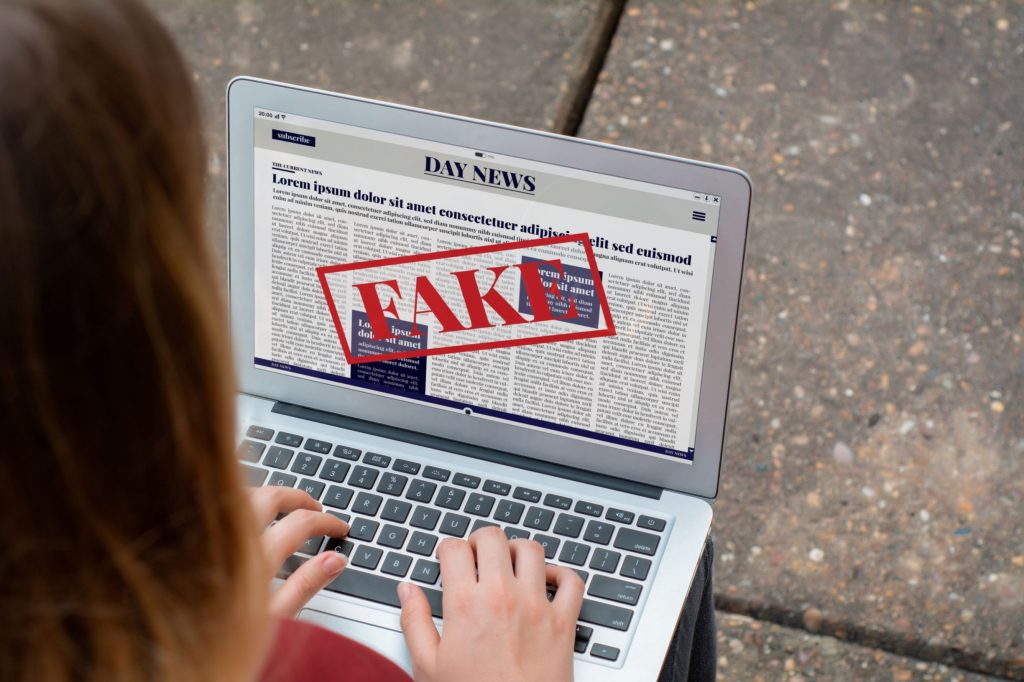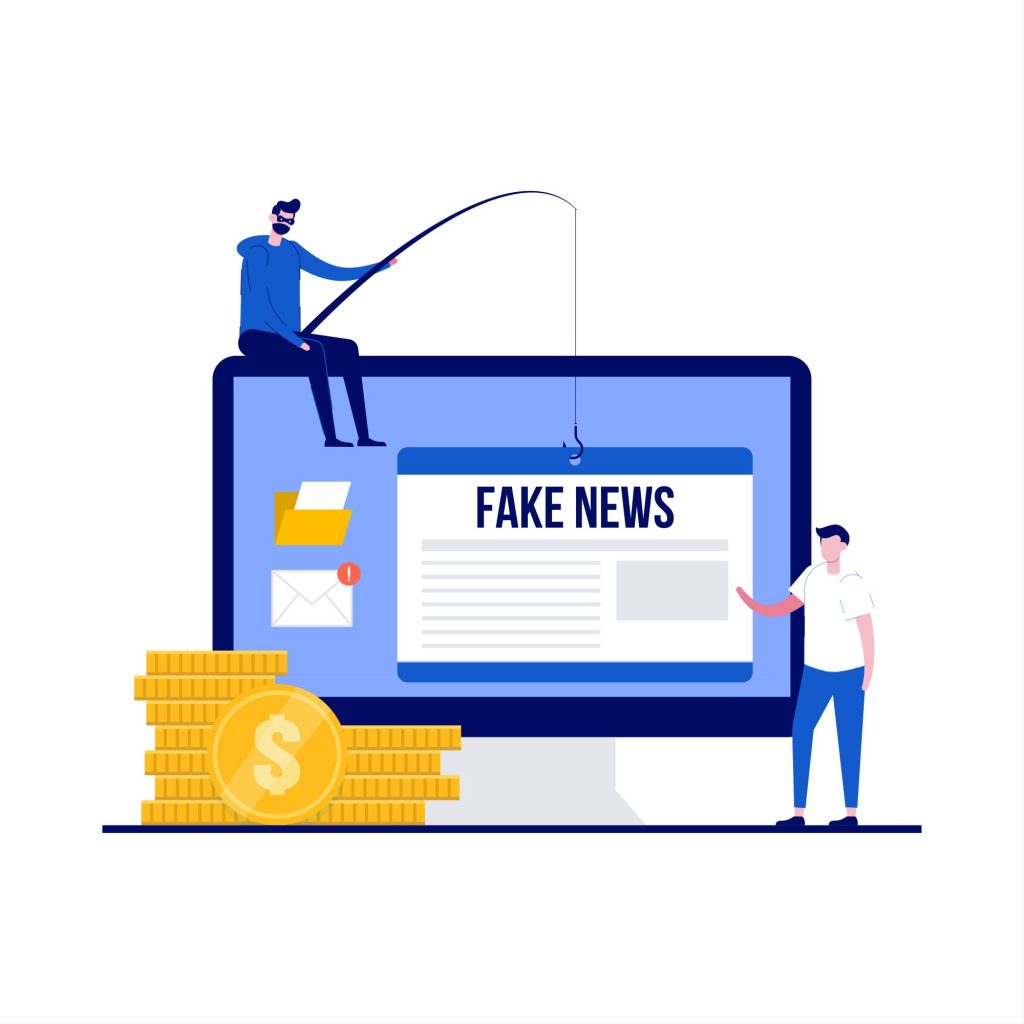Fake news travels fast, to paraphrase an old saying. In our always on and digitally connected world, this is especially true. But is your ad revenue rewarding publishers of fake news?
Although there is a lot to gain politically and socially for many fake news creators, there is also the lure of money.
Yes, fake news pays. And much like spoofed websites and the deep rooted problem of ad fraud, fake news is getting harder to spot and to eliminate.
Recent research from the University of Michigan found that Google Ads provides display ads for 48% of fake news websites. In fact, the top 10 online ad firms are taking up to $1.15 million per month from low quality and fake news websites.
The research also finds that “Fake news publishers are still strongly reliant on credible ad servers.”
So how does this affect the average marketer, and what can you do about it?
Spreading fake news
The rise of ‘independent’ news media outlets online has run parallel to the decline of print journalism and the traditional news media. You may have seen a growing number of websites designed to serve local news, many of which are not run by journalists in the traditional sense.
These sites are often basic WordPress templates crammed full of low quality or repurposed content, much of which barely passes for news. Or, worse still, is content created with the intention spreading disinformation.
And once the fake news is out there, it spreads like wildfire. Often because the (dis)information is often sensationalised with click-bait worthy headlines designed to make people engage. In fact, a study from MIT found that false news stories on Twitter are 70% more likely to be spread than real news.
The same study also found that it took real news six times longer to reach 1500 views than fake news.
It’s never been easier to create a platform for fake news, and generating traffic from a variety of sources is straightforward too.
Money machines
The amount of websites online grows by over 500,000 every day. And with a growing industry of traffic and backlink building, a relatively poor quality website designed with malicious intent can be bringing in the bucks within weeks.
Monetising websites means advertising, and that usually means banner or video display ads.
Before we go any further, let’s make one thing clear. There are plenty of genuine websites out there and, in fact, they outweigh the fraudulent or shady ones. But, it’s these bad actors that bring the whole industry into disrepute, and there is most definitely an issue with low quality websites created to host as many ads as possible.
Highlighting the problem, a BuzzFeed article found that two local news websites in Canada were generating huge volumes of traffic and ad revenue. In fact, they made more than the established local news sources from the same town.
How? By looking at the details of the traffic sources and activity, it becomes clear that fraudulent traffic is the most likely culprit.

Fake news, hate views, and bot traffic
Fake news is one thing, but what about funding hate speech? Chances are you probably don’t want your brand ad appearing alongside an article about white supremacy (hopefully not anyway).
Notorious alt-right website Breitbart has been found to be making money from display advertising by misrepresenting itself using ads.txt. It turns out that the site uses third-party sales houses to host ads from a variety of platforms without the advertisers’ knowledge.
This itself poses a problem for some advertisers, who are paying out for ad impressions for both a platform that they most likely wouldn’t want to be associated with, and an audience that they would not want to target.
And it’s not just Breitbart. There is a whole world of sites peddling extremist views, conspiracy theories and general disinformation (or heavily skewed information at best).
But what about that fake traffic? How does having your ads hosted on these low quality fake news or hate speech websites lose you money?
Many of these publishers will use third party platforms to generate traffic to their site. And, with higher traffic volumes comes higher ad impressions or clicks. Many pay per click ad sources are totally genuine, such as using Google or Facebook to display ads to a targeted demographic.
But sources such as PPC exchanges or content discovery networks may not have quality filters to weed out the bots and click farms.
Being aware of the threats associated with fake traffic and fake news are the first steps to protecting your ad spend from ad fraud and click fraud, and from displaying your ads in places you don’t want to.
How to protect your ads
If you’re running PPC ads yourself, from Google, Bing or Facebook, you can always keep an eye on where your ads appear and edit your placement list. You can also add publishers to a blacklist if you’ve identified them as low quality.
Advertisers using third party ad platforms, agencies or PPC exchanges should check their process with generating traffic or vetting publishers. If in doubt, use a different ad manager or platform.
Avoiding clicks from fake traffic is a major way to reduce the impact of these poor quality websites on your marketing budget. Fake traffic is a major and growing problem. And, as we have seen in our 2020 report, the average volume of fraudulent clicks on PPC campaigns is around 14%, with some campaigns being hit by more than 60% in fake or fraudulent traffic.
ClickCease is the industry leading PPC protection software, blocking fraudulent clicks from bots, scapers, malicious clickers and click farms. With the biggest blocklist (which is growing constantly), the fastest blocking in the industry and a whole stack of unique features to help you manage your ads, ClickCease will help you maximise your ROAS and block bad traffic.
Curious about who is clicking your ads? Sign up for your free site audit today.
You can read more about click fraud and ad fraud in our in-depth guide.
This article was originally published on October 21st 2020, and updated on 30th June 2021 with new information.
